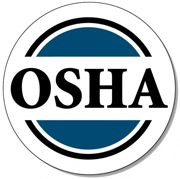3-Way Catalytic Converters / Catalytic Mufflers
Three-Way Catalytic Converters - Maintenance
There are three recommended methods of periodically cleaning the core of a three-way catalytic converter. Each method involves removing the core from the three-way catalytic converter end cones. To remove the catalytic core, loosen the retaining bolts or clamps, which retain the end cone flanges. Some small diameter models of three-way catalytic converter do not have removable cores. For these smaller models the entire three-way catalytic converter must be removed from the exhaust system. For three-way catalytic converter with bolted or clamped flanges, carefully separate the flanges to avoid damage to the gasket. Once the core has been separated the three following cleaning methods are recommended.
1) For light accumulations remove the core and use compressed air (90 psi maximum) to clean light accumulations of ash and related contaminants. Use a rubber tipped air nozzle and apply the airflow directly to the inlet and outlet faces of the catalytic core. It is advisable to wear an approved high quality dust mask or respirator (such as a Norton model #100 or Siebe North model #7700) and perform the cleaning operation in a well-ventilated area. Initially blow the compressed air into each cell of the core outlet face until clean, and then repeat the procedure in the inlet face. Repeat the procedure as required. Alternately a steam cleaner (using low pressure dry steam) can be used as a substitute for compressed air.
2) For heavy accumulations remove the core and place the core into an oven capable of achieving a temperature of 1050°F (565°C) for a period of 2-3 hours. Usually a ceramic kiln or a heat treating oven will suffice. Use an oven with an air atmosphere and do not exceed the recommended maximum temperatures and time duration.
3) For heavy accumulations remove the core and soak the core in a solution of “Super Concentrated Gunk” or “State 999” brand detergent. Any detergent that is free of lead, heavy metals and other catalyst contaminants may be substituted. Allow the core to soak for one hour in detergent. Blow dry with compressed air or low pressure dry steam. Rinse any remaining detergent with hot water. Blow dry with compressed air. Repeat this procedure until the core is clean. Once the core is rinsed, clean and dry; attach the inlet and outlet end cones. Install new gaskets or re-use the existing gasket. Return the unit to service.
| Problem | Cause of Problem/Solution |
| 1) High NOx emissions | A) Poor air/fuel ratio control (adjust). |
| B) Insufficient hydrocarbon emissions (adjust air/fuel ratio for hydrocarbon emissions setting of 2000 to 5000 PPM minimum before the three-way catalytic converter). | |
| C) Core is contaminated with ash and particulate (clean core). | |
| 2) High CO emissions | A) Check engine air cleaner (clean or replace). |
| B) Check exhaust system for oxygen leaks before the three-way catalytic converter (seal and repair). | |
| C) Core is contaminated with ash and particulate (clean core). | |
| 3) Difficult carburetor or air/fuel controller ratio adjustment/high CO emissions. | A) Check engine air cleaner (clean or replace). |
| B) Check exhaust system for oxygen leaks before the three-way catalytic converter (seal and repair) | |
| 4) Difficult carburetor or controller air/fuel ratio adjustment. | A) Check fuel feed and supply (adjust). |
| B) Check fuel feed pressure (adjust). | |
| C) Check controller operation (repair/replace) | |
| 5) Difficult engine start-up. | A) Core is contaminated with ash and particulate (clean core immediately) |
| 6) High three-way catalytic converter exhaust gas temperatures at outlet Cone. | A) Fouled spark plugs (replace). |
| B) Poor air-fueled control (repair and adjust). | |
| C) Ignition system timing or operation (correct). | |
| D) Upper cylinder and cylinder head/valve condition is suspect (repair/replace) |
Fuel Specifications:
Contaminants include chlorinated, silicon or sulfur compounds. The concentrations of contaminants should not exceed the following levels:
Chlorinated Compounds: Not to exceed 10 PPM
Silicon Compounds: Not to exceed 0.5 PPM
Sulfur Compounds: Not to exceed 300 PPM
Use of fuel which exceeds these contaminant levels will void the product warranty.
Lubricant Specifications:
The engine lubrication oil for the crankcase shall be either a “low ash” or “no ash” type. “Low ash” oil has a maximum permissible ash content of 0.5% ash. In addition the engine lubrication oil should be free of any compounds, which contain phosphorous, sulfur, chromium, copper, zinc, iron, tin, lead and other metals. All of these metals will “poison” the catalyst coating of the three-way catalytic converter and lead to early failure.
Use of engine lubrication oils, which contain these compounds, will void the product warranty.












































